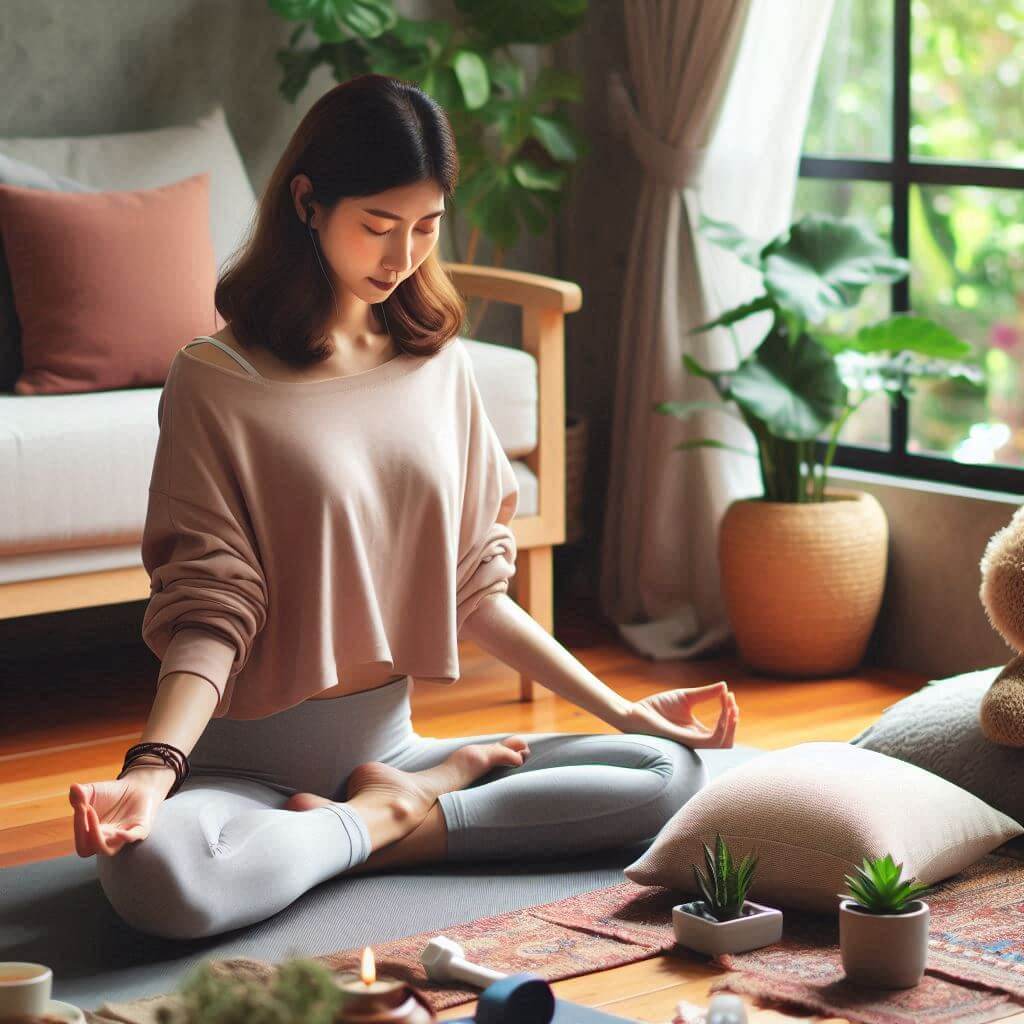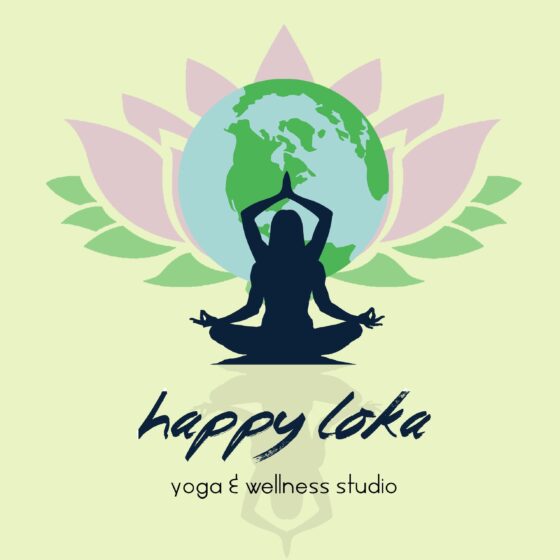Restorative yoga is specifically designed for relaxation and healing, quite different from more dynamic styles of yoga that involve active movements and physically demanding sequences. In restorative yoga, each pose is held for a long period, often five minutes or more, allowing the practitioner to fully settle into the pose with the help of various props such as blankets, blocks, pads, and even sandbags. These props not only provide comfort but are also strategically used to support the body in a way that encourages the complete release of muscle tension.
The gentle nature of restorative yoga means it focuses on quality rather than quantity. A typical session may consist of only five to six poses, each carefully selected for specific areas of tension and promoting ease and comfort.
The atmosphere in which restorative yoga is practiced is also designed to promote relaxation. Sessions are often held in a softly lit room with soothing background music or nature sounds to help participants disconnect from the busy outside world and enter a more introspective state. The temperature is kept comfortable to prevent any discomfort that might detract from the experience. Even practice time is factored in, with classes usually scheduled early in the morning or late at night to complement the body’s natural rhythms.
 From the point of view of physical arrangement, much attention is paid to the alignment of the body. Proper alignment not only helps prevent injury but also improves the flow of energy and breath through the body. Restorative yoga teachers spend a lot of time getting their students into the right positions, making sure the body is aligned to promote maximum relaxation and benefit. This meticulous attention to detail in body positioning helps release deep-seated tension, benefiting both the physical body and mind.
From the point of view of physical arrangement, much attention is paid to the alignment of the body. Proper alignment not only helps prevent injury but also improves the flow of energy and breath through the body. Restorative yoga teachers spend a lot of time getting their students into the right positions, making sure the body is aligned to promote maximum relaxation and benefit. This meticulous attention to detail in body positioning helps release deep-seated tension, benefiting both the physical body and mind.
By doing restorative yoga, practitioners are not on the path to physical performance, but on the path to deeper self-awareness and understanding. It serves as a quiet place to come back inside, away from life’s distractions and noise, fostering a deep connection between mind, body, and breath. Each session provides an opportunity to practice mindfulness, helping people learn to stay present and aware throughout the practice. This awareness then translates into daily life, helping practitioners maintain a calm and balanced state of mind amidst the challenges of daily life.
Benefits For Physical And Mental Health
One of the compelling benefits of restorative yoga is its countless health benefits, both physical and mental. This approach to wellness helps mitigate the effects of chronic stress that many of us face in our daily lives. During restorative yoga, the body deeply relaxes, signaling the brain that it is safe to turn off the fight-or-flight response and activate the parasympathetic nervous system, often referred to as the rest-and-digest system. This change helps lower heart rate, lower blood pressure, and promote deeper breathing—all physiological responses that contribute to long-term health improvements, including better digestive function and a more robust immune system response.
Physically restorative yoga is a boon for those dealing with muscle tension and general stiffness. By using supports for full body support, muscles can relax and lengthen without the typical stress required in more active styles of yoga. This can lead to improved flexibility and a greater range of motion over time. In addition, gentle stretches and poses help stimulate blood circulation, improving the transport of oxygen and nutrients to the body’s tissues, which promotes faster recovery from sore muscles and fatigue.
This form of yoga emphasizes spinal alignment, which can greatly improve posture and alleviate the discomfort associated with prolonged periods of sitting or standing that are common in many modern jobs. This proper alignment helps prevent the development of spinal diseases and can relieve back pain, a common ailment in today’s adult population.
On the mental health front, the benefits of restorative yoga are equally impressive. This practice is especially effective for reducing stress and anxiety. By encouraging deep relaxation, restorative yoga helps lower levels of cortisol, a hormone produced by the adrenal glands in response to stress. High levels of cortisol have been linked to some health problems, including insomnia, chronic fatigue syndrome, and depression. Therefore, a regular practice of restorative yoga can help keep cortisol levels in a healthy range.
Restorative yoga also promotes emotional healing and resilience. This can be especially therapeutic for those recovering from emotional trauma. The safe, supportive environment of a restorative yoga session provides a space for practitioners to experience and release emotions that may be stored in the body.
The meditative aspect of restorative yoga improves mental clarity and focus. The practice includes a series of mindfulness and breathing techniques that calm the mind and reduce mental clutter. It can improve concentration and memory by improving neural pathways in the brain. Practitioners often report feeling mentally refreshed and emotionally balanced after a session, carrying these benefits into their daily interactions and activities.
Restorative Yoga And Emotional Resilience
Restorative yoga classes allow practitioners to connect deeply with their inner selves. This connection is strengthened through the calm, meditative state encouraged during the practice. When people hold poses for long periods, they become more attuned to their breathing and the subtle changes in their emotions and thoughts. This heightened awareness is a form of mindfulness that has been shown to significantly increase emotional intelligence and resilience.
Mindfulness encourages non-judgmental perception of thoughts, which becomes a powerful emotional processing tool. Rather than being overwhelmed by negative emotions or stress, practitioners learn to observe them with detachment and understanding. This skill, which was once developed as part of the practice of yoga, is transformed into everyday life. This allows people to cope better with stress and recover more quickly and easily from emotional setbacks.
During restorative yoga classes, the parasympathetic nervous system is activated, which not only reduces physical stress but also stabilizes emotional reactions. The calming effect of this activation helps balance mood swings and helps maintain a more stable emotional state. Regular practice can reduce the effects of anxiety and depression as the body learns to remain calm and focused even in stressful situations.
Another key aspect of restorative yoga that increases emotional resilience is its ability to develop a greater sense of self-care and self-compassion. When people take time to nurture their bodies and minds through gentle poses and deep relaxation, they develop a kinder, more loving relationship with themselves. This self-compassion is key to building emotional strength because it gives people the empathy and understanding to get through difficult times.
By adopting a regular practice, people strengthen these pathways of care and resilience, gradually changing their responses to the world around them. This transformation consists not only in less reactivity to stress but also in cultivating a stable sense of peace and contentment regardless of external circumstances. Those who practice restorative yoga often report a greater ability to cope with personal and professional challenges, attributing their increased emotional stability to their dedicated practice.
